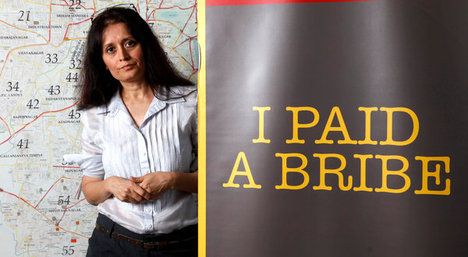 “A police officer attempted to stop residents from rushing into a real estate trading center in Shanghai after new restrictions were announced.” Source of caption and photo: online version of the NYT article quoted and cited below.
“A police officer attempted to stop residents from rushing into a real estate trading center in Shanghai after new restrictions were announced.” Source of caption and photo: online version of the NYT article quoted and cited below.
(p. A4) SHANGHAI — When the Chinese government announced new curbs on property prices this month, homeowners bombarded social networking sites with complaints. They formed long lines at property bureaus to register to sell their homes before the restrictions went into effect.
And some couples went even further: they filed for divorce.
Divorce filings shot up here and in other big cities across China this past week after rumors spread that one way to avoid the new 20 percent tax on profits from housing sales was to separate from a spouse, at least on paper.
The surge in divorce filings is the latest indication of how volatile an issue real estate has become in China in the past decade and how resistant people are to additional taxes.
. . .
On Friday, at a marriage registration center in the Pudong district, a 33-year-old woman named Frances Tao arrived with her husband. She acknowledged that they were filing for divorce, not to avoid the 20 percent capital gains tax on second homes, but to get around another restriction, which requires home buyers to put down a much higher deposit on a second home than on a primary residence.
Ms. Tao said that by divorcing, one of them would be able to purchase a first home and put down less money and get a better interest rate.
“We don’t have other choices,” Ms. Tao said. “But the government and developers continue to make a lot of money.”
For the full story, see:
DAVID BARBOZA. “In China, Checklist for a Home Seller: First, Get a Divorce.” The New York Times (Sat., March 9, 2012): A4.
(Note: ellipsis added.)
(Note: the online version of the story has the date March 8, 2012.)




